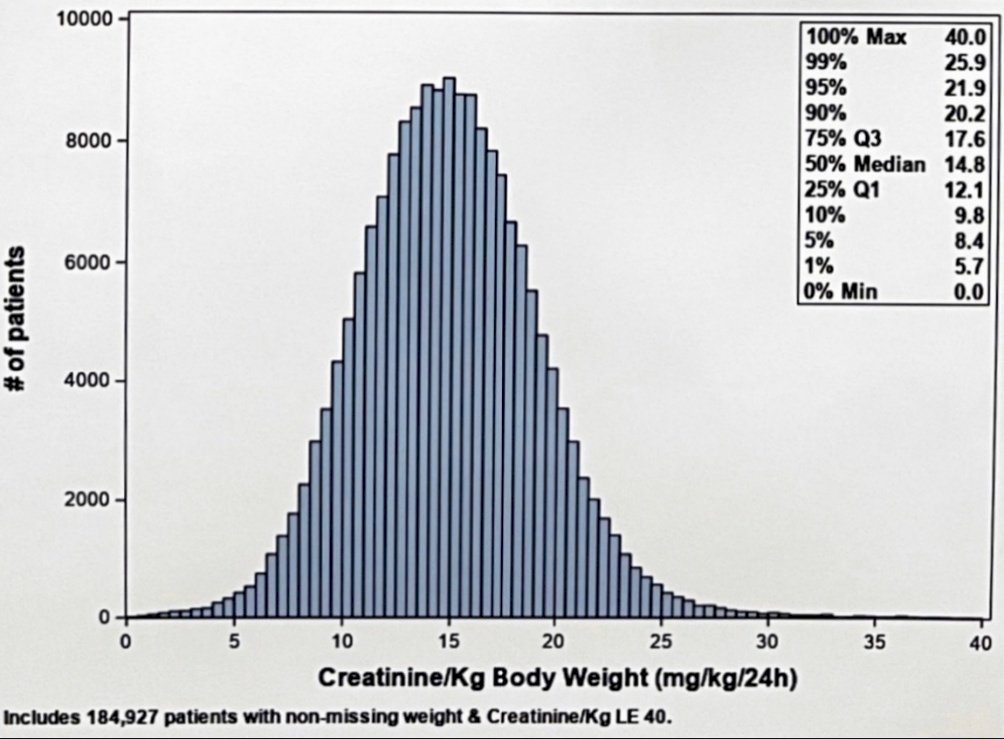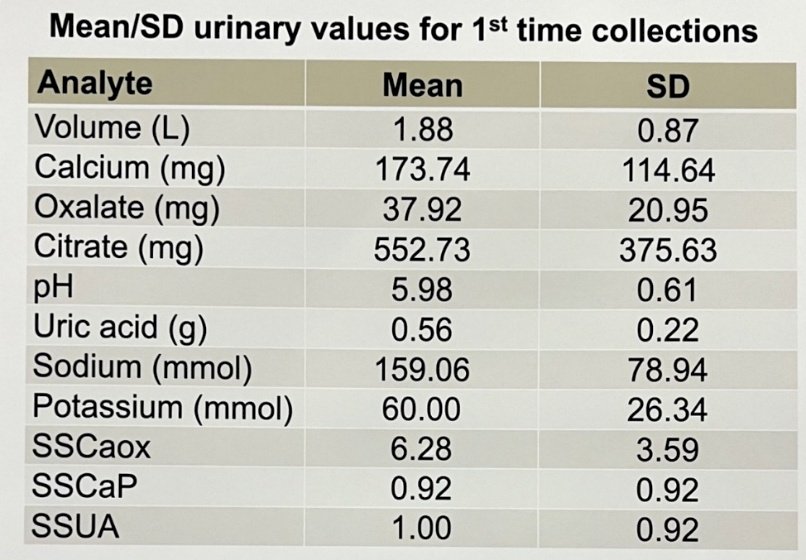(UroToday.com) The 2022 American Urological Association (AUA) Annual Meeting featured work from Dr. Ryan Hsi and colleagues at Vanderbilt University Medical Center presenting their study assessing the 24-Hour urine abnormalities of older adults with urinary stone disease. Traditionally, urinary stone disease is thought to mostly affect working age adults, but its prevalence is highest among the elderly population over the age of 64. In addition to treatment, secondary prevention is an important aspect of treating urinary stone disease to prevent the recurrent formation of stones. The American Urological Association strongly recommends 24-hour testing for adults with urinary stone disease to identify and correct urine abnormalities that can lead to the formation of stones. However, given the differences in physiologic and lifestyle differences between elders and adults of other age groups, the role of 24-hour urine testing may need to be reevaluated. As such, Dr. Ryan Hsi and colleagues sought to evaluate 24-hour urine abnormalities among adults of 65 years of age and older.
Twenty-four-hour urine specimens collected from Medicare beneficiaries 65 years of age and older between 2010 to 2019 were identified. The criteria for inclusion were Medicare beneficiaries aged 65 and older, diagnosis of urinary stone disease, and undergone 24-hour urine testing between year 2010 to 2019. For subjects with multiple 24-hour urine test, only the first urine specimen collection was included in the study for analysis. Abnormalities of urine parameters (hyperoxaluria, hypercalciuria, hyperuricosuria, hypocitraturia, or abnormal urine pH) were determined and counted based on given laboratory reference ranges.
A total of 196,297 samples from 2010 to 2019 from Medicare beneficiaries with urinary stone disease were identified and analyzed.
Urine creatinine per body weight (creatinine/kg) was normally distributed indicating sample adequacy.
The values of each urinary parameter were compared to laboratory reference ranges to identify abnormalities. The mean and standard deviation for urinary values for all collections are noted in the figure above.
The most common abnormality was low urine volume (61.9%), followed by hypocitraturia (43.8%), hyperoxaluria (34.2%), hypercalciuria (25%), and hyperuricosuria (17.3%). High and low urine pH were detected in 25% and 31.4% of subjects, respectively.
Approximately, 33.9%, 35.2%, and 15.8% of beneficiaries had 2, 3, and 4 or more concurrent abnormalities, respectively.
Through this study assessing the urine abnormalities among Medicare beneficiaries (65 years and older) with urinary stone disease, Dr. Ryan Hsi and colleagues presented the following conclusions:
- Urinary stone disease in older adults is associated with the presence of more than one urine abnormality.
-The number of abnormalities suggests the benefits of 24-hour urine testing in the older population to aid in selective intervention and stone prevention.
Presented by: Ryan Hsi, MD, FACS, Department of Urology, Vanderbilt University Medical Center, Nashville, TN
Co-Authors: Mary Oerline and John Hollingsworth, Dow Division of Health Services Research, Department of Urology, Joseph Crivelli, Department of Urology, the University of Alabama at Birmingham School of Medicine, Birmingham, AL, Vahakn Shahinian, Division of Nephrology, Department of Internal Medicine, University of Michigan, Ann Arbor, MI
Written by: Minh-Chau Vu, B.S., Department of Urology, University of California, Irvine during the 2022 American Urological Association (AUA) Annual Meeting, New Orleans, LA, Fri, May 13 – Mon, May 16, 2022.







